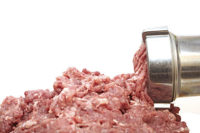On August 28th, the Food Safety and Inspection Service (FSIS) published a Notice in the Federal Register announcing proposed changes to the agency’s Salmonella sampling program for raw beef. FSIS accepted comments on the notice until Sept. 27, 2013. As FSIS made clear in the notice, the agency will not likely grant any extensions.
Under the current FSIS Salmonella testing program, 9 CFR 310.25, FSIS only conducts Salmonella samples on raw ground beef. An establishment’s results are measured against the regulatory Salmonella Performance Standard of no more than five positive samples in the 53-sample set. Although the regulation permits FSIS to seek to withdraw inspection for three consecutive failures of the standard, FSIS customarily conducts a Food Safety Assessment (FSA) after the first failure in lieu of taking action under the regulation.
Proposed changes
The primary proposed change is that FSIS would sample raw beef products for Salmonella in conjunction with any E. coli O157:H7 sample. For beef trim (including veal trim), the product would be analyzed for E. coli O157:H7, non-O157 STEC and Salmonella. For ground beef, bench trim and other raw ground components, the product would be sampled for E. coli O157:H7 and Salmonella. The notice is not expanding or proposing to expand non-O157 STEC analysis beyond trim.
Once the new sampling starts, FSIS would no longer conduct ground beef Salmonella sets (except for follow-up sets at establishments that failed the raw ground beef Performance Standard in their most recent sets).
In addition, once the new sampling starts, FSIS will:
- Use a 325 gram analytical sample size (currently 25-grams is used),
- Use a single enrichment for all analyses, and
- Expand the analysis conducted and reported to include enumeration, serotyping, PFGE, and multi-drug resistance.
Although Salmonellais not an adulterant per se, the agency states that should a positive be linked to illnesses, FSIS will conduct an Incident Investigation Team Review or an FSA at the establishment and take other action if warranted. This is current FSIS policy.
Use of the data to determine national Salmonella prevalence for ground beef
According to FSIS, the current Salmonella performance sets are designed to measure plant controls, not to provide a national prevalence estimate. A better sampling scheme to assess prevalence is the scheme FSIS uses to randomly select raw products for E. coli O157:H7 sampling. In FSIS’ view,the use of this E. coli O157:H7 sampling scheme eliminates the need for a separate Salmonella baseline for beef.
Use of data to establish new Salmonella performance standard
Merely because FSIS is proposing to conduct Salmonella sampling in conjunction with E. coli O157:H7 samples does not mean FSIS is abandoning performance standards.
- For Ground Beef — After collecting at least three months of data on ground beef, FSIS will conduct a risk assessment and develop a new performance standard for ground beef based on the 325-gram sample. FSIS will publish any revised standard before implementation.
- Alternatives to Set Sampling — FSIS is considering whether to move away from Salmonella performance set sampling and go to a “moving window” of 20-plus samples to permit greater flexibility in scheduling sample collection at different establishments.
- For Trim — “After careful consideration, FSIS does not believe the low incidence of Salmonella on beef manufacturing trimmings supports development of a Salmonella performance standard for beef manufacturing trimmings.”
Timetable
After the comment period closes, FSIS will review the comments and publish a new notice in the Federal Register. Once the notice is published, FSIS will stop conducting sample sets for ground beef and begin analyzing all raw beef samples submitted for Salmonella. From there, FSIS will use the results to determine the national prevalence.
Armed with the prevalence, FSIS would adopt new raw ground performance standards based on a 325 gram sample and likely using a moving window.






